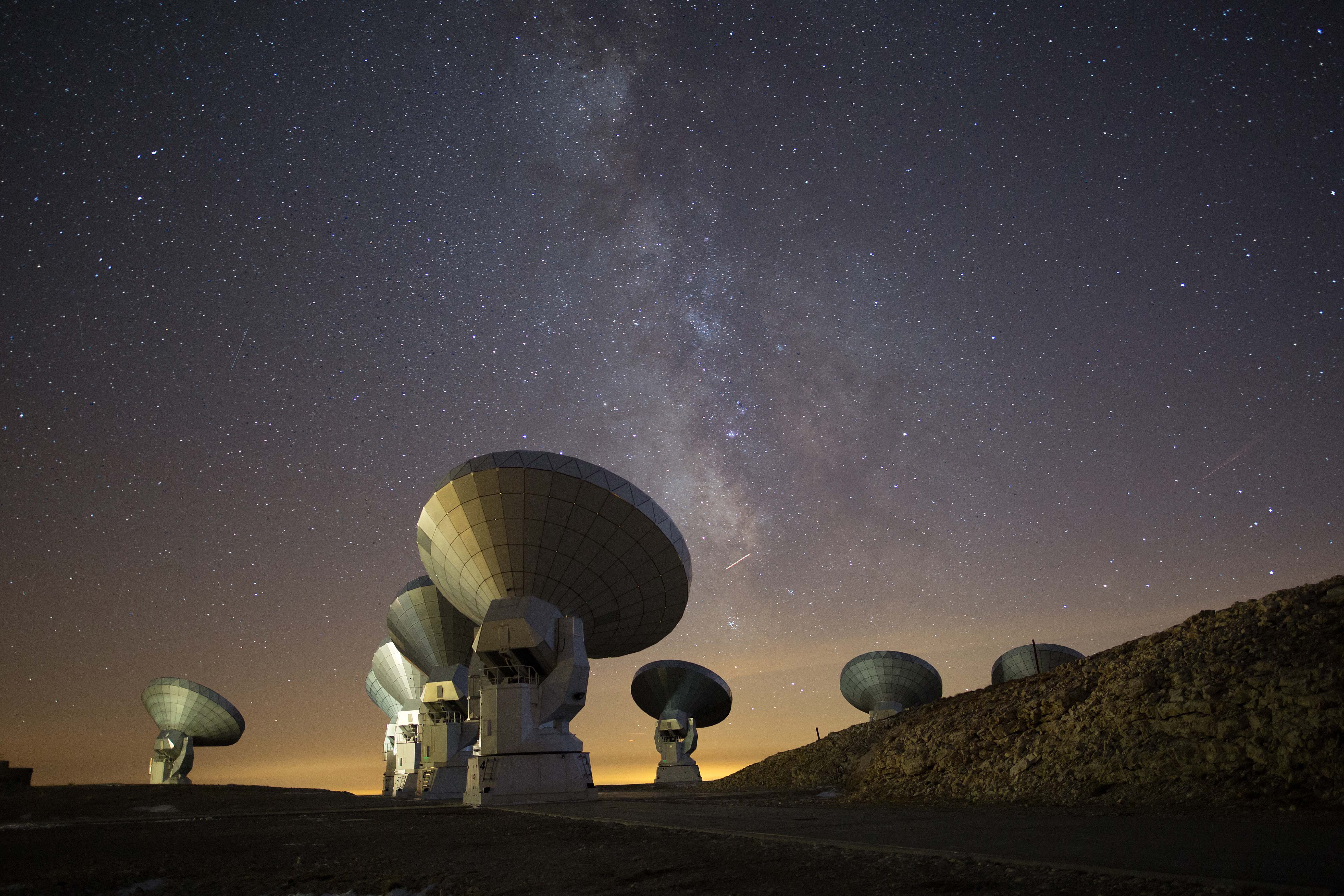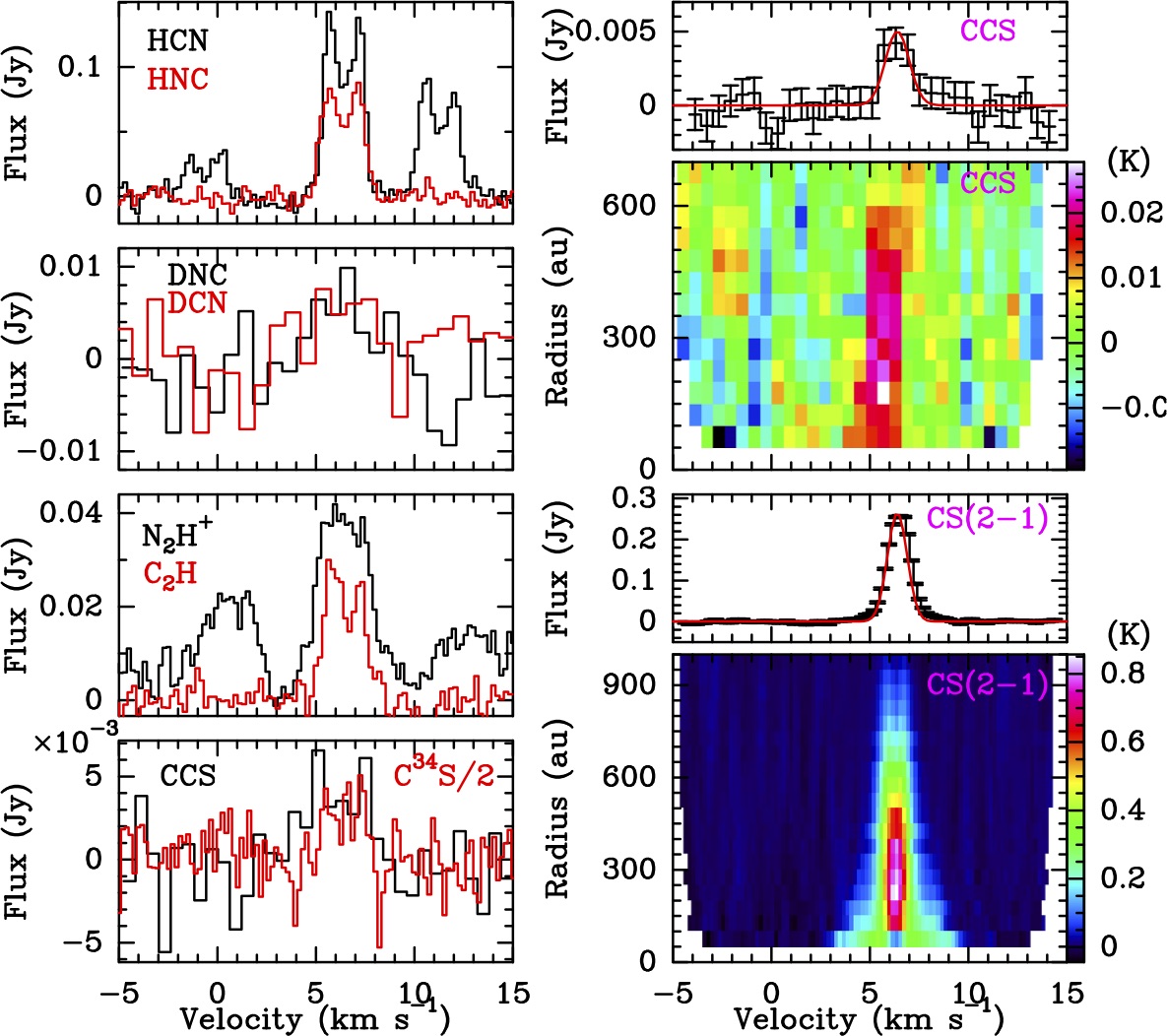News
First detection of the Thioxoethenylidene molecule (CCS) in a proto-planetary disk
Understanding the composition of proto-planetary disks, which are the cradles of planetary systems, remains a key step towards elucidating the mechanisms of planet formation.
The observation of molecules is the main way to constrain the physical mechanisms at work in these disks. However, to do this, it is crucial to understand the chemical evolution of these same molecules in order to correctly interpret the molecular observations in the disks.
 |
| NOEMA detected for the first time the CCS molecule in a disk where planets are formed. Credits: IRAM, DiVertiCimes |
Among the molecules known to date, those containing sulphur remain poorly understood. CS (carbon monosulphide) was among the first molecules detected in the disks in 1997 using the IRAM 30-meter telescope. The situation has only recently changed, with the discovery of H2CS by ALMA, and H2S, a key molecule for sulphur, by NOEMA.
An international team of researchers used the NOEMA observatory, and in particular its ability to observe many molecular lines at the same time, to detect the Thioxoethenylidene molecule (CCS) in the disk surrounding the triple star GG Tau. The disk is quite massive, which facilitates the detection of low abundance molecules, such as H2S, detected in 2018 by the same team.
The abundance of the newly detected CCS molecule is about 20 times lower than that of CS. The detection of this molecule, as well as an upper limit on the abundance of OCS, reinforces the problem of understanding the chemistry of sulphur in the disks. To date, no chemical model is yet able to correctly predict the abundances of the well-detected sulphur molecules (CS, H2S, H2CS and CCS) or of those whose detection is less significant (SO and OCS). The detection of this new molecule is a further step towards a more coherent chemical model, gradually opening the way to understanding the physics and chemistry of the disks where planets are born.
 |
| Spectra showing the detections of various molecules including CCS (left). On the right: spatial distribution of CS and CCS in the disk surrounding GG Tau. Credits: Phuong et al. 2021 |
Read more:
N. T. Phuong, A. Dutrey, E. Chapillon, S. Guilloteau, J. Bary, T. L. Beck, A. Coutens, O. Denis-Alpizar, E. Di Folco, P. N. Diep, L. Majumdar, J.-P. Melisse, C.-W. Lee, V. Pietu, T. Stoecklin and Y.-W. Tang

